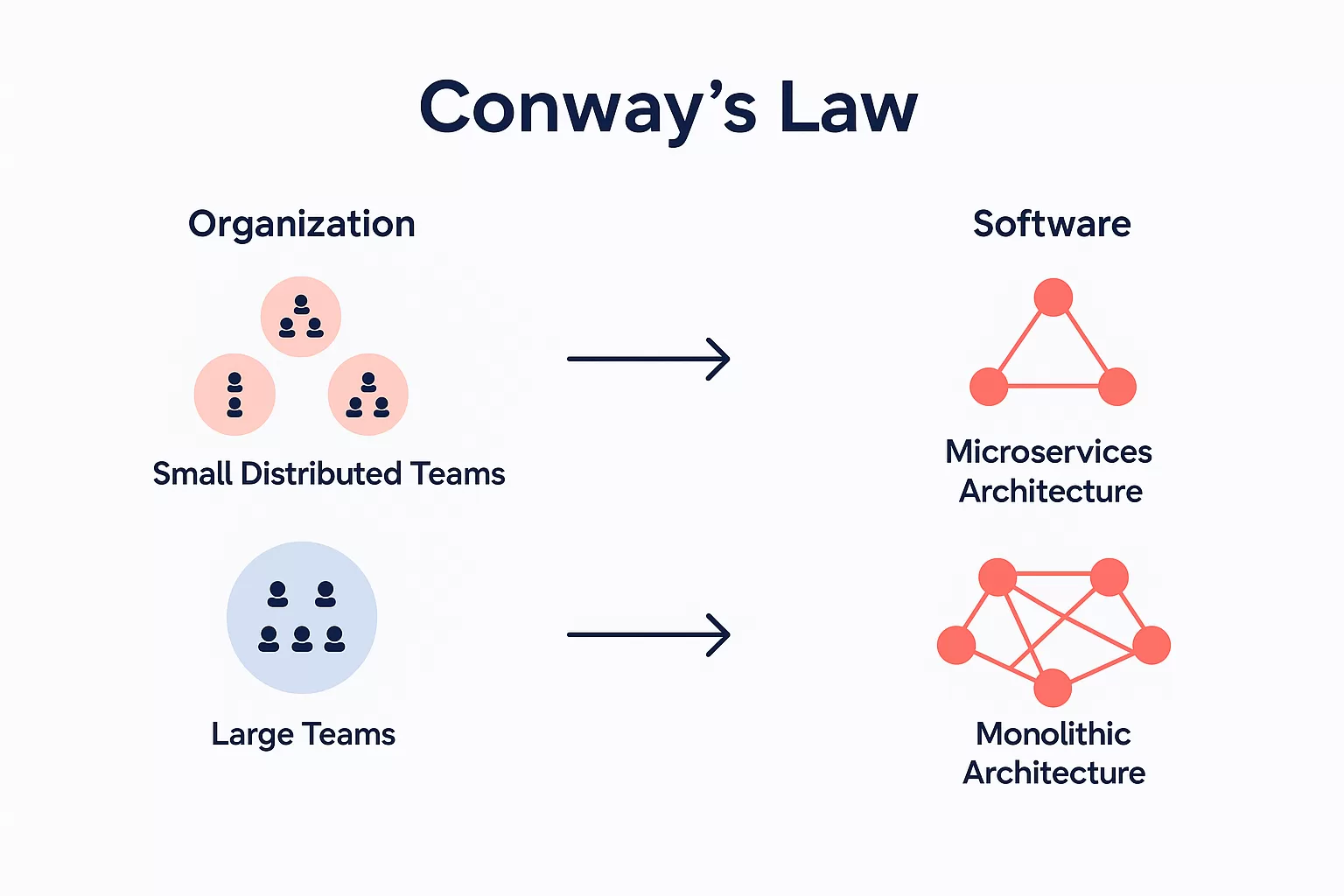Have you ever noticed how the way your team communicates ends up reflecting in the software they create? That idea is the essence of Conway’s Law, which directly impacts results. In this article, we’ll explore how this law works, why it’s so important, and how NextAge can be your strategic partner in developing high-quality software.

What Is Conway’s Law?
Conway’s Law was introduced in 1967 by Melvin Conway. He observed something that anyone who has ever worked in a team already knows: software is a mirror of the company that creates it. If communication is poor, with siloed departments that hardly interact, the result is almost always a system full of barriers, “patches,” and integration failures.
On the other hand, when an organization invests in collaboration, the software produced reflects that spirit: more cohesive, functional, and easier to evolve.
A classic example: if you have four separate teams that don’t communicate well, you’ll likely end up with four distinct modules, poorly connected to each other. But a united team that naturally shares information tends to produce a more integrated and efficient system.
In other words, Conway’s Law is like the “law of gravity” in software development. You can’t ignore it, but you can learn to use it to your advantage.
How Conway’s Law Affects Software Development
This law has practical backing with clear evidence:
- Researchers at MIT and Harvard Business School have shown that loosely-coupled organizations (those with fluid communication) produce more modular and flexible products, while rigid structures lead to monolithic systems.
- A recent study (ECIS 2025) analyzed how software modularity relates to collaboration networks among developers. It concluded that technical modularity and organizational modularity are strongly linked, and that excessive concentration of expertise can compromise quality.
- A survey with 252 participants revealed that good collaboration accounts for up to 81% of performance variation among teams, and 61% in stakeholder evaluation. Trust, shared values, and coordination were key factors.
These findings confirm that communication is essential to avoid rework, bugs, and fragmented systems.

The Strategic Side of Conway’s Law
Here’s the turning point: if every piece of software reflects a company’s communication, then technology leaders can use this law as a compass.
Instead of expecting a fragmented system just because the team is fragmented, it’s possible to organize teams so they reflect the software you want to build. This approach is known as Conway’s Law Inverse.
Want a modular system? Create cross-functional teams responsible for each module. Need full integration? Form squads that bring together professionals from different areas, working side by side from the start.
Big companies like Amazon and Spotify already apply this logic, creating “mirror teams” of their software architecture. Amazon’s famous “two-pizza team” model (small teams that could be fed with just two pizzas) is a practical example. The idea is simple: when the team is lean and communicates well, the software follows suit.
In the end, Conway’s Law stops being an obstacle and becomes a powerful management tool.
Conway’s Law and IT Staff Augmentation
Now let’s bring this into the reality of many companies. You may understand the importance of Conway’s Law, but you don’t always have the ideal internal structure to apply it. Overloaded teams, lack of specialists, or even departments that don’t “speak the same language” make the process difficult.
This is where Staff Augmentation comes in as a strategic solution. Instead of pushing your internal team to operate beyond its limits, you bring in professionals or squads ready to integrate and help align communication, in other words, turning Conway’s Law from a risk into a competitive advantage.
At NextAge, this happens in different ways, including:
- Adaptative scope projects: when your company needs a well-defined delivery with clear goals, NextAge creates a communication and collaboration structure that ensures the software result is integrated and cohesive.
- Specialized staff augmentation: when you need to strengthen an existing team, our specialists step into your organization’s workflow, absorb the culture, and help improve communication channels. The result is software that reflects what you want, not just what your internal structure would allow.
In short, Conway’s Law shows that software and organizational structure cannot be separated. And NextAge is here to ensure that your structure works in favor of your software, not against it.

How to Apply Conway’s Law Positively
- Map how communication currently happens: who talks to whom, and how often.
- Structure teams that mirror the desired architecture: components = teams.
- Adopt agile practices and real collaboration.
- If you identify communication gaps, rely on an experienced partner like NextAge to bring fluidity and confidence to the process.
NextAge helps you structure teams and projects that truly deliver value, bringing clarity and smooth collaboration where it’s missing. Talk to us and discover how we can become the strategic extension of your IT team. Get in touch with us.






